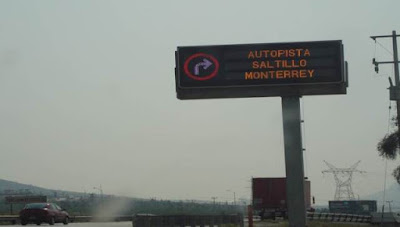Dynamic Message Signs (DMS) for supporting traffic management and improve Safety
Transportation Management Systems (TMS) are
applications of advanced strategies and also technologies apply to traffic
management. These applications improve performance to mobility, safety and
environmental impacts.
TMS applications involve a transportation
management centers (TMC), field infrastructure, and mobile units to communicate
in real time to monitor and manage transportation systems.
An example of TMS systems are de Dynamic Message
Signs. DMS are used as a part of TMS to encourage a response of drivers or
motorist to improve system performance.
The desired responses of motorist could be for
example:
- Reduce speed
- Move out of a blocked or closed lane
- Take an alternative highway route or transit option
- Report to TMC incidents or accidents
The disseminated information by the DMS at high
way locations include:
Travel advisories
and warnings of nonrecurrent events:
- Incidents and accidents
- Construction
- Transit delays
- Queue warning
- Adverse weather conditions
Also information
about:
- Travel time
- Dynamic speed limit
- Lane control
- Dynamic pricing of managed lanes
- Alternative routes
In addition, these signs are also used for AMBER Alert.
Example of the use of
DMS in Monterrey – Saltillo Highway in Mexico:
Queue warning information:
Incidents and accidents:
Adverse weather conditions:
General information and alternative routes:
Dynamic Message Signs (DMS) improve the safety
for de drivers in a Highways and give value information in real time.









Comentarios
Publicar un comentario